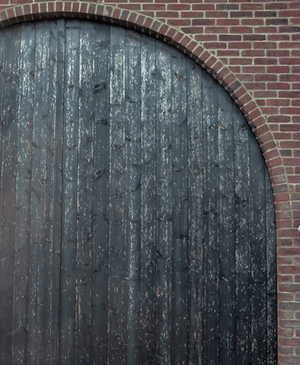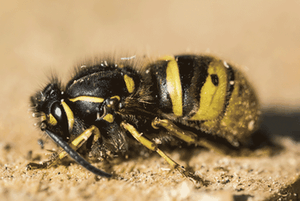Questions answered about wasps - Page:5
Do wasp nests make noises?
A wasp nest is generally quiet during its early stages of construction. You may hear some wasps arriving and leaving the nest. However, as the nest grows and the number of wasps increases, the noise the nest produces will also increase. You may hear a crackling or popping sound if the nest grows large. Some people mistake this sound for dripping water. The young wasp larvae make this sound to encourage the adult wasps to feed them and also as they move around in their cells. If you hear this crackling or popping sound but cannot see the nest, it indicates that the nest is sizeable. Hornets are similar in this regard.
If the weather is hot, wasps will bring water into the nest and spray it inside to help cool the nest. They will also sit outside the nest entrances and fan air into the nest. Sometimes, this fanning action can be loud and sound like an electric fan. However, the noise is not a "buzzing" sound like the one produced by bees. If you hear a loud buzzing sound, it is probably bumblebees. Bumblebee nests can create a high-pitched chirping sound.
Prices
We offer a flat rate of £65.00 for treating a Wasp or Hornet nest, regardless of location. We don't have any hidden charges, such as VAT or unnecessary surveys. If we find any additional nests on your property, we charge an extra £15.00 per nest. All of the work we do is guaranteed. We are available to work on weekends, too! So, if you come across a nest in your garden on a Saturday or Sunday, don't worry; call us, and we'll come out immediately.
What is a wasp nest made from?
Wasps construct their nests using chewed wood, which they strip from garden sheds or fence panels. Light marks on the exterior of these structures can indicate the presence of a nearby wasp nest. As the number of wasps increases, these marks become more visible. The stripped wood is mixed with saliva to create papier-mache material, which is then moulded to form the nest. Despite being lightweight, this material is surprisingly waterproof. Unlike a honeycomb made from wax, the nest's interior, including the hexagonal cells or comb, is also made from this wood material.

How does the life cycle of a wasp begin?
The lifecycle of a wasp begins with a single wasp, called the queen. In the spring, once the temperature is high enough, the queen emerges from hibernation and starts building a new nest. As soon as she has enough cells constructed at the core of the nest, she lays eggs in each cell. Only the queen is responsible for laying eggs and looking after the adolescent wasps, known as the first brood, during this stage of development.
When the larvae are mature enough, they spin a silk cap over their cell. Eventually, they pupate into adult wasps. These fully developed wasps take over the nest-building and nursing/feeding duties. In the late summer or autumn, the original queen will lay eggs that hatch as queen and male larvae. These larvae will eventually pupate into adult queens and males. The males die once they leave the nest and have mated with virgin queens, and the queens hibernate over winter.
It is noteworthy that both wasps and hornets follow the same life cycle.

We have had large wasps in our house in winter. What is happening?
During winter, if you find large wasps in your home, it is likely that they are queen wasps which have been hibernating and have woken up too early for some reason. This usually happens in mild winters when temperatures are above 10 degrees for some time. Nature signals to the queen wasps that spring has arrived, and they would usually go outside. Still, they can be attracted inside because of short daylight hours and lights on in the evening inside your home. Wasps are attracted to lights in the same way that moths are. Downlights are a particular problem as they sometimes shine upwards into the loft space as well as down into the room. Bedroom and bathroom windows left open in late summer with the lights left on overnight will also attract wasps from nearby nests.
